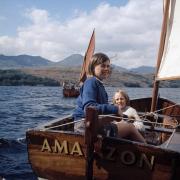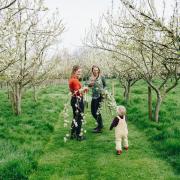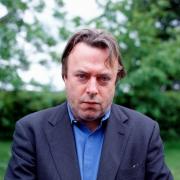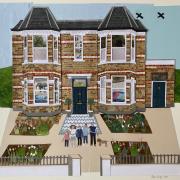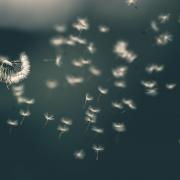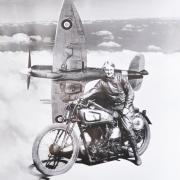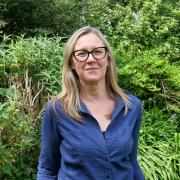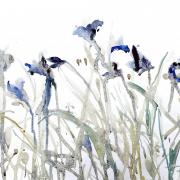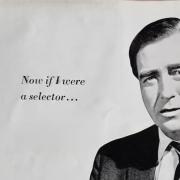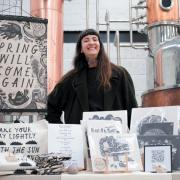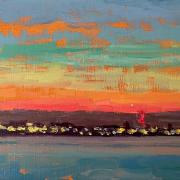She spent most of her life in Lyndhurst, was married to a Hampshire county cricketer, and became the first president of Emery Down WI, but her greatest claim to fame was being the inspiration for the ‘Alice’ in Alice’s Adventures in Wonderland. Steve Roberts uncovers the true story of Lewis Carroll's muse for International Women's Day
Alice Pleasance Liddell (1852-1934) was born in Westminster, the daughter of Henry Liddell (1811-98), a scholar and Oxford professor who was Headmaster of Westminster when Alice was born, and Lorina Liddell, née Reeve. Henry returned to his alma mater in Oxford, Christ Church, to become dean and vice-chancellor. It was whilst growing up in the ‘City of Dreaming Spires’ that Alice met Charles Dodgson, a college maths tutor. That their lives conflated is illustrated by a window in the college’s Great Hall. It’s dedicated to Dodgson’s stories, but with Alice Liddell depicted.
Alice was the fourth child of ten. Of all her siblings, it was younger sister Edith (born 1854) that she loved best, their ages not dissimilar. It would be 1856 when the Liddells moved to Oxford when Alice was approaching her fourth birthday. It was shortly afterwards Alice first met Charles Lutwidge Dodgson (1832-98), better known as ‘Lewis Carroll’, author of the ‘Alice’ books. Dodgson came across the family on 25 April 1856 when he was photographing Oxford’s cathedral. Dodgson ingratiated himself with the Liddells, becoming a family friend for several years.

The story goes that Dodgson invented ‘Alice’ whilst on a boating trip with the three Liddell girls on 4 July 1862 when the real Alice was ten. He is said to have conjured a story of a fictional ‘Alice’, one our Alice begged Dodgson to write. He finally did this in November 1864, presenting her with a handwritten, illustrated version entitled Alice’s Adventures Under Ground. As for how much the real Alice inspired the fictional Alice, well, there is plenty of debate about how far one was based on the other. Whatever the truth, Dodgson and the Liddells became estranged in 1863 with the author’s biographers suggesting he had long-term designs on young Alice, which may have caused the rift. There’s also speculation the cooling off may have been because another Liddell girl, Lorina, became infatuated with Dodgson. Alice’s Adventures in Wonderland was published in 1865 with the follow up, Alice Through the Looking-Glass, hitting the shelves in 1871.
There was a triumvirate of Liddell girls, Lorina, three years older than Alice, Alice herself, then the younger Edith, all three separated by just five years, and all on that boat trip. The fact they came as a package is illustrated by the 1872 picture by renowned female photographer Julia Margaret Cameron depicting the girls as the daughters of King Lear. Alice was around 20 by this time. She first encountered Cameron during a family holiday to Freshwater on the Isle of Wight. Sadly, Edith died just four years after that picture was taken, on 26 June 1876. Her funeral, just four days later, saw the coffin’s pallbearers include Prince Leopold, Duke of Albany (1853-84), the youngest son of Queen Victoria, who had spent four years studying at Christ Church. There have been suggestions Alice may have been of romantic interest to Leopold, although it’s also been posited that Edith was the one he actually fell for, especially given his role at her funeral. That Alice was enchanting though is beyond doubt.

Edith was destined to marry a cricketer, had she lived, which curiously was the fate awaiting Alice. She wed Reginald Hargreaves, magistrate and occasional willow wielder, and pupil of Dodgson’s at Christ Church, on 15 September 1880 when Alice was 28. An indication of the well-to-do nature of this tale is that the wedding was in Westminster Abbey, with Reginald having inherited a substantial fortune. Hargreaves played for Hampshire from 1875-85 and when he died in February 1926 was a vice-president of the County Cricket Club. The couple had three sons, two of whom tragically died during WW1. The surviving son, Caryl, who bestowed a granddaughter on Alice, was not named after Dodgson’s pseudonym Lewis Carroll; or rather it was denied he was.
Alice established herself as a society hostess, becoming the first president of Emery Down WI, a small village just under one and a half miles north-west of Lyndhurst. The family home was Cuffnells, which sadly became hard to maintain after Reginald’s death in 1926 leading Alice to sell the manuscript of Alice’s Adventures Under Ground in 1928, to raise £900,000 (in today’s money) for repairs. Alice may not have regretted this lost connection with the other Alice as Mrs Hargreaves however after admitting to being: ‘tired of being Alice in Wonderland’.

Alice died on 16 November 1934 aged 82 and was cremated at Golders Green Cemetery, her ashes brought to the Church of St Michael and All Saints in Lyndhurst for burial. As well as Alice’s outside grave, there’s a monument to her two sons inside, whilst the family pew, in front of the pulpit, also remembers Alice’s family. Cuffnells didn’t survive. Having been a hotel, and requisitioned during WW2, it was demolished in the early-1950s. There is apparently a rescued fireplace from Alice’s old house in the Oak Inn at nearby Bank, whilst the New Forest Heritage Centre in Lyndhurst has Alice’s ‘looking glass’.
There have been at least 15 representations of Alice Liddell in novel, short story, play, opera, TV, film and even videogame. The film, Dreamchild (1985) was inspired by Alice’s trip to America in 1932 when she received an honorary doctorate from Columbia University when it displayed her sold manuscript for the centenary of Dodgson’s birth. The film used flashback to explore the possibility the author may have had romantic leanings towards our Alice. She was indeed a dream child, ‘the most famous little girl in English literature’, a child who continues inhabiting our imagination.

Chronology
1852 – Alice Pleasance Liddell born in Westminster (4 May).
1856 – Alice first meets Charles Dodson, a.k.a. Lewis Carroll, who’d create Alice
1862 – The boat trip with the Liddell girls that was reputedly the genesis for Carroll’s Alice.
1865 – Publication of Lewis Carroll’s Alice’s Adventures in Wonderland.
1871 – The follow up, Through the Looking-Glass and What Alice Found There, is published.
1876 – The three Liddell girls are snapped by Julia Margaret Cameron on the Isle of Wight.
1880 – Marries Reginald Hargreaves, who would die in 1926.
1928 – Alice sells her manuscript of Alice’s Adventures Under Ground.
1932 – Alice visits the United States for the centenary of Charles Dodgson’s birth.
1934 – Alice Hargreaves dies in Westerham, Kent (16 November), aged 82.





